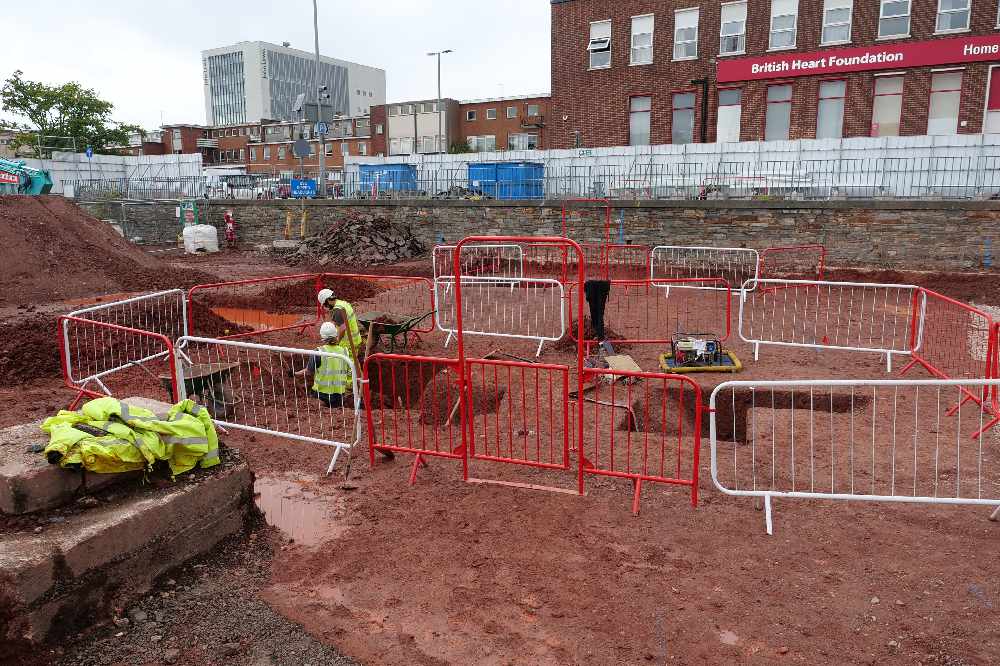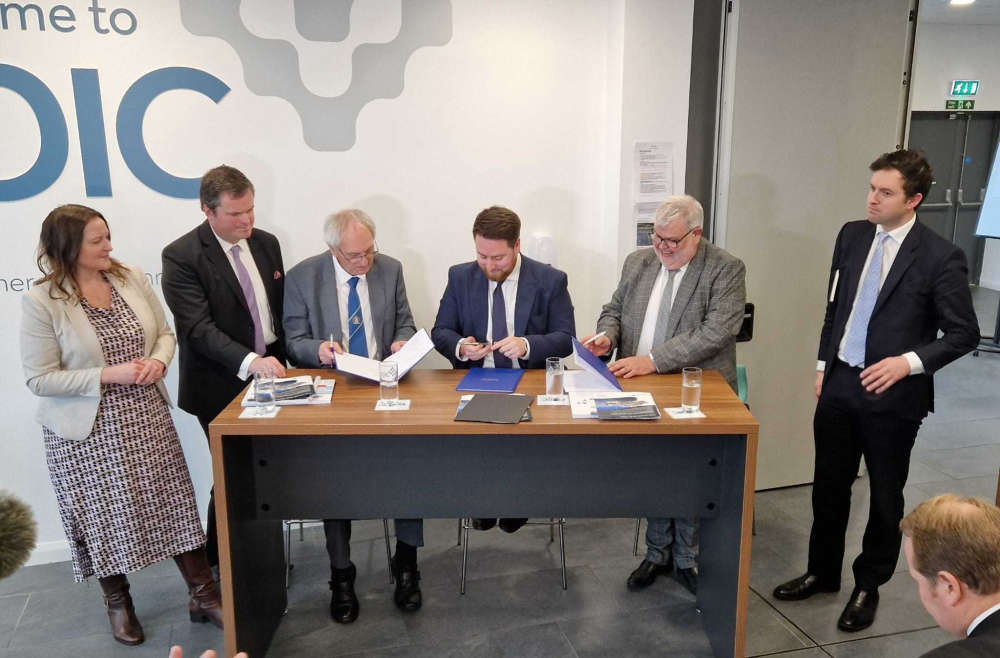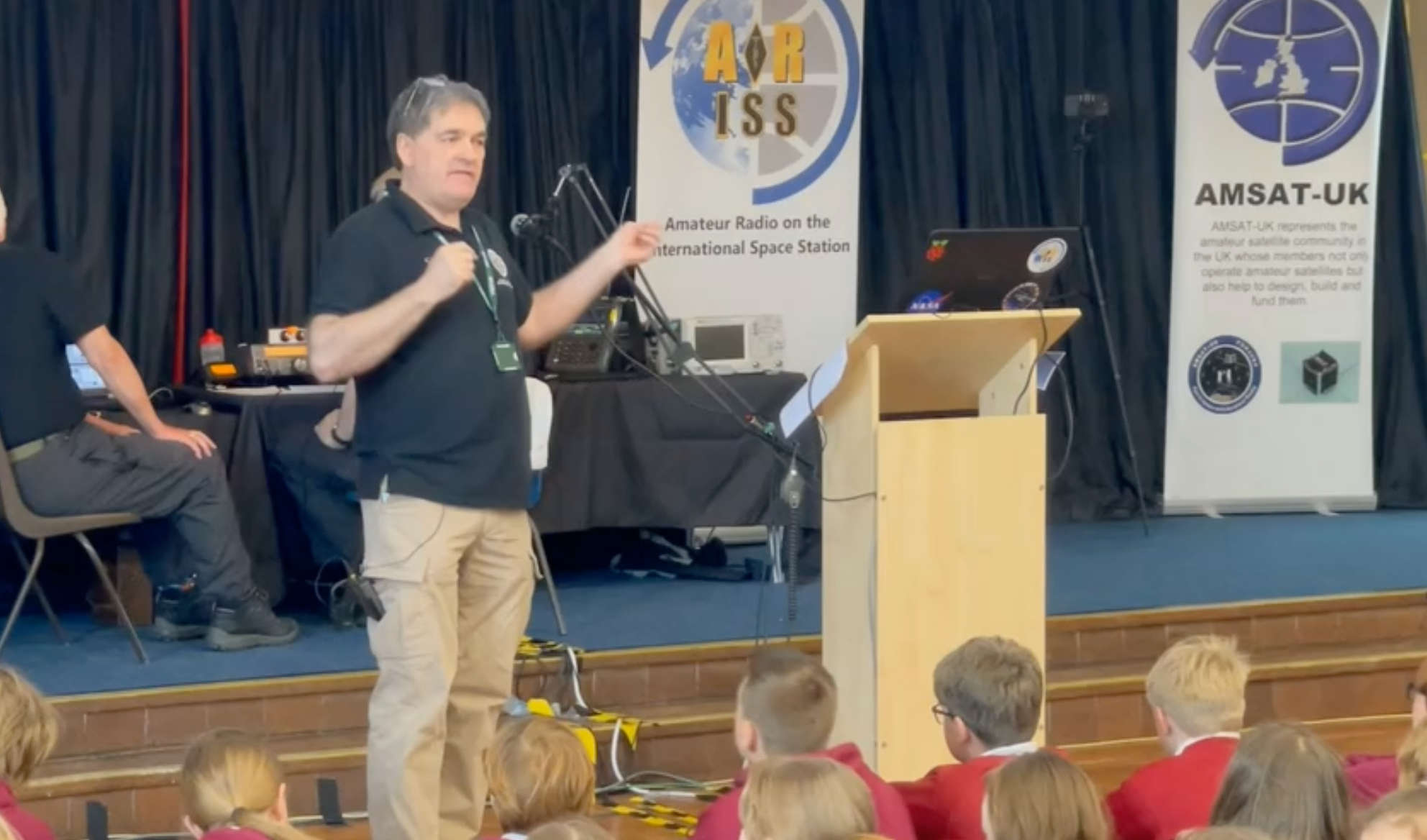
The discovery was made ahead of the building of a new bus station and leisure complex
Archaeologists working on the redevelopment of Exeter’s bus station have uncovered the remains of a Roman fort.
The “very important and completely unexpected” finds were made while working to record remains of the city’s Roman history, ahead of the building of a new bus station and leisure complex.
The archaeology work will not impact on the construction timetable.
The finds, which include coins and local pottery made in the area for the military, as well as fine red Samian tableware imported from France will be studied, and the results published.
First to be uncovered was a Roman ditch at the top end of the site between Bampfylde Street and Cheeke Street. Further excavations revealed two further large Roman ditches running parallel to each other.
Experts have revealed that these belong to a new, and completely unknown, Roman military site, either a fort occupied by a military unit, or a defended depot or compound.
Both are typical Roman military ditches. The outer, eastern one has a steep V shaped profile, with a deep “ankle breaker” trench along the bottom. The inner, western one is larger and deeper, and would have been immediately in front of a rampart above it to the west.
It has a much steeper, near vertical, outer side, which was designed to trap any attackers who got this far and to leave them at the mercy of the defenders on the rampart above. It also has a deep ankle breaker trench.
The inside of the fort, or depot or compound, was to the west of these ditches, under the rest of the bus station, and under Bampfylde Street and probably Sidwell Street. The other sides of it have yet to be discovered.
Andrew Pye of Exeter City Council said: “This is a very important, and completely unexpected, discovery, in an area that has been heavily changed by previous post war redevelopment. Along with other recent work in Exeter, it demonstrates just how much of the city’s history can still survive in unlikely places, despite damage caused by bombing and modern concrete foundations.
“As the city continues to grow and renew, it is a good example of how the planning system and developers work together to make sure that remains that are inevitably affected by new development are properly excavated and recorded for the benefit of this and future generations.”
“This discovery of yet another new Roman “fort” within the city does demonstrate, along with that of the fortress and baths back in the 1970s and of several other new major military sites in the last decade, just how pivotal a role the Exeter area played in the first decades of the Roman conquest and subjugation of Britain, and how crucial development led archaeology has been in revealing this.”
Derek Evans, of Cotswold Archaeology’s Exeter Office, said: “We’re very pleased to be working with Kier and Exeter City Council on this important site. The unexpected nature of this discovery and the significance of uncovering previously undocumented Roman military features in this area of the city, have made this a challenging and interesting project. We look forward to undertaking further analysis of the finds and other material recovered during our works and refining the story of the site’s history.”
 Young voices barely registered in devolution consultation
Young voices barely registered in devolution consultation
 Energetic Pretty Woman is a must-see
Energetic Pretty Woman is a must-see
 Devoncast - Police and Crime Commissioner election special
Devoncast - Police and Crime Commissioner election special
 New pledge on South Hams Freeport funding
New pledge on South Hams Freeport funding
 Axminster children connect with space station
Axminster children connect with space station
 East Devon should get new CEO
East Devon should get new CEO
